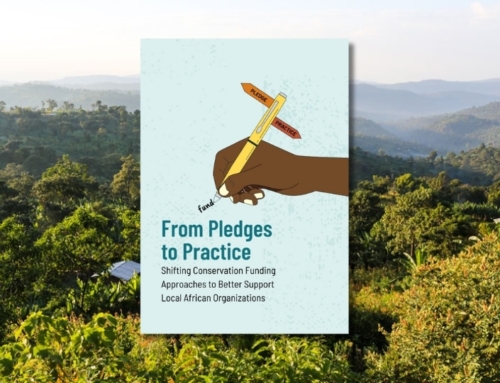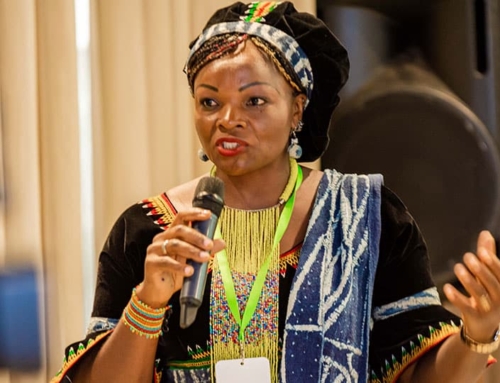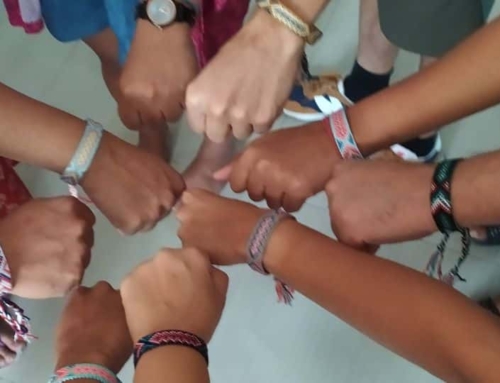For environmental philanthropy to reach the places it is most needed and be most effective, better collaboration among funders is key.
In February, Synchronicity Earth held a webinar, ‘Funding together: pooling resources for conservation’, to explore how environmental funders can work together to overcome the lack of sustainable and effective funding available to smaller, locally led conservation groups in some of the most biologically and culturally diverse regions on Earth.
Sharing their insights into the lessons, challenges, and successes at this webinar were our Congo Basin Affiliate Bihini Won wa Musiti, our Youth Affiliate Swetha Stotra Bhashyam, and Kai Carter, Global Climate Initiative Director of the David and Lucile Packard Foundation.
Our pooled funds
Synchronicity Earth currently has four pooled funds (supporting the Amphibian Programme, Freshwater Programme, Congo Basin Programme, and our Chrysalis Youth Fund) all at various stages of evolution in the number of funders and amount of funding they distribute.
There is no single or simple definition of a pooled fund; each fund is specific to its context and the type of work it supports. For us, pooled funding is better described as an approach or intention around how we fund conservation.
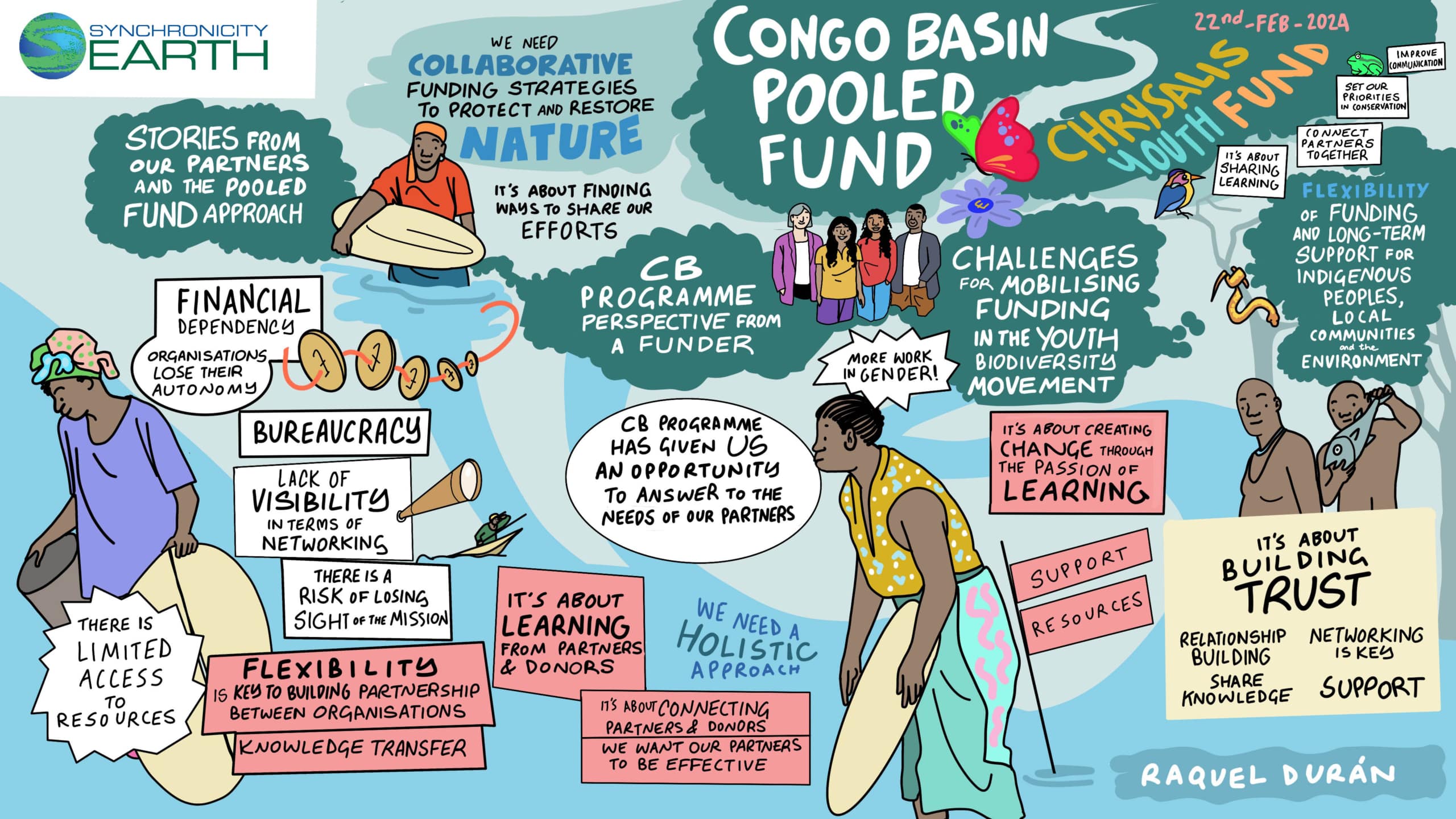
An illustration of some of the ideas and themes that emerged throughout the discussion by the talented visual scribe Raquel Durán. See full size. © Raquel Durán
What drives our approach?
Our pooled funding approach is driven by two main ambitions:
First of all, to increase the amount of effective funding going to priority conservation challenges, providing stronger more targeted support for the organisations and individuals best placed to help address those challenges.
Secondly, to encourage deeper engagement and learning around how to fund effectively, and better communication between and among environmental funders and with the smaller, locally led organisations working on the ground.
Though our pooled funds vary, they provide similar benefits. Donors gain access to the expertise of our Programmes Team and affiliates, are able to reach local groups more easily, can reduce time-consuming administrative burdens involved in grant management, and learn from other funders. For partners, pooled funding increases their capacity, visibility, and networking, provides critical long-term funding and core support, and reduces the administrative burden involved in writing proposals and reports for multiple separate funders.
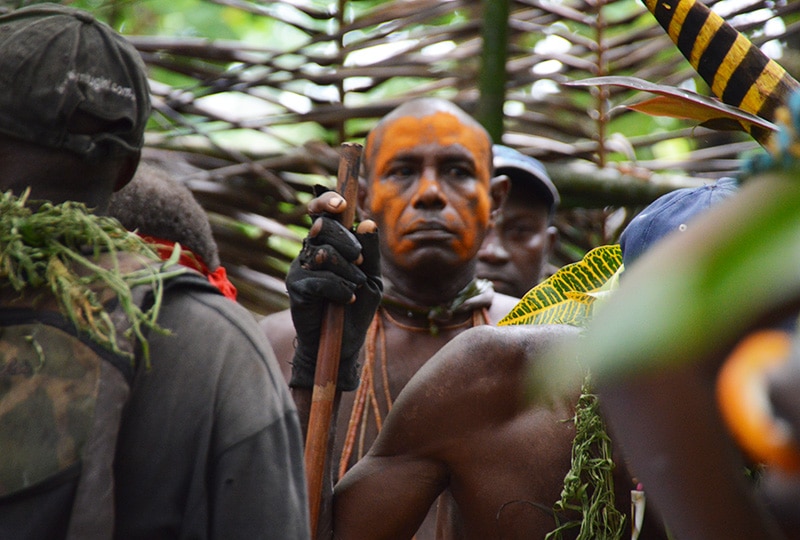
Synchronicity Earth develops long-term relationships with partners achieving important environmental impacts in hard-to-reach areas, which contributors to the pooled funds can benefit from. Image © Ailan Awareness
The challenges of accessing funding
There are several factors that can make it harder for local organisations to receive the funding they need to do vital conservation work.
Bihini Won Wa Musiti, who has worked with Synchronicity Earth as an affiliate since 2018, explains that it can be harder for small organisations to engage in networking. This lack of visibility means local groups might not be brought to light when donors are looking for partners to fund.
For local organisations that do secure funding, compliance needs can be very demanding, and smaller groups may struggle to meet these alongside reporting, technical, and financial requirements.
Financial dependence is another important issue. Because of the strict criteria large donors often have for granting funding, where there is limited access to alternative financial resources, small organisations can lose their autonomy.
Similarly, difficulties can arise from the pressures of aligning objectives if donors’ aims do not correspond to the identified needs of local organisations. This can present what is called a ‘loss of mission’ risk.
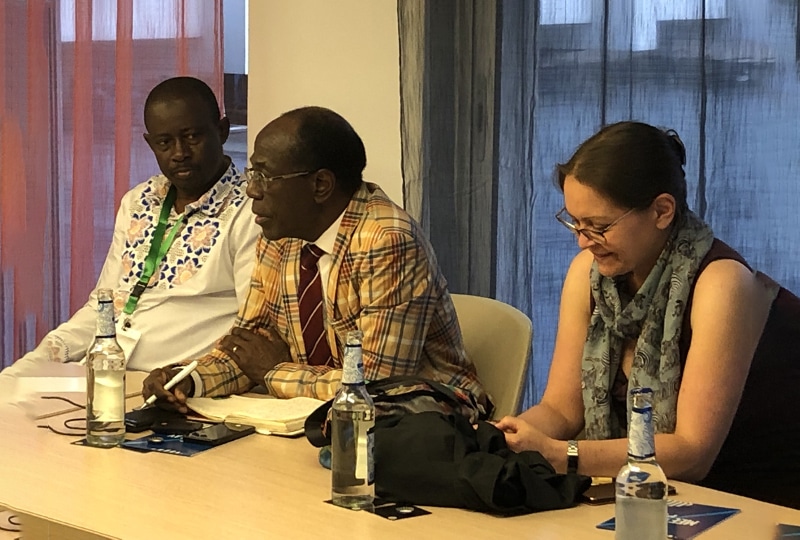
Bihini speaking at a side event of the Alliance for Food Sovereignty Africa (AFSA) conference in Kinshasa 2023.
Further hurdles for youth
The challenges that apply to any organisation looking for funding can be exacerbated for youth activists seeking support. Sweta Stotra Bhashyam, who joined Synchronicity Earth last year as a Youth affiliate, gives more detail on the barriers to funding youth action for biodiversity.
Higher levels of perceived risk can make fundraising extremely time-consuming. Although it is starting to change, Swetha adds:
“Most of the time, people who are younger are not trusted to be reliable enough to complete successful projects.”
Coupled with the fact that youth movements tend to be less established – and may lack access to bank accounts or the legal structures needed to obtain funding – young people have to be extremely resilient, working against traditional systems which were not designed with flexibility in mind.
Youth often rely on restrictive and project-based public sector funding, as that’s all they have access to. Even after securing grants, the bureaucracy involved in accessing funds and reporting puts great strain on developing organisations with limited infrastructure.
“When we met Synchronicity Earth we were looking for support for human resources, which no other public sector funder was really willing to give us. We wanted young people on the ground to advocate for youth rights, ensuring that the global framework has young people’s voices in it. This is where we started evolving the Chrysalis Youth Fund.”
Swetha Stotra Bhashyam, Youth Affiliate
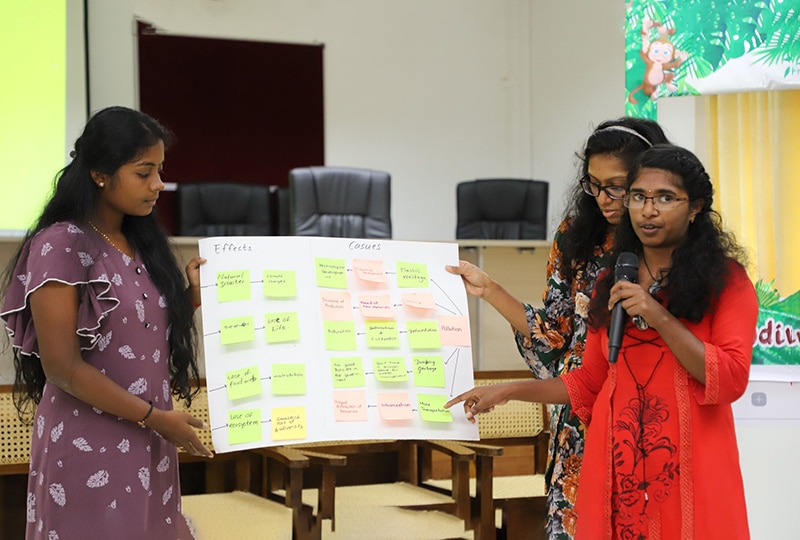
One of the partners in the Chrysalis Youth Fund is the Global Youth Biodiversity Network, which has regional chapters all over the world (GYBN Sri Lanka pictured here). Image © GYBN
Finding solutions through pooled funding
The pooled fund approach is designed to overcome these challenges, affording partners the autonomy to reach their own self-determined priorities.
Firstly, it works in a way that allows for flexibility. As Bihini notes:
“This flexibility allows us to build partnerships, and reassign funds to modify plans. We can observe the emerging needs and react to these.”
Second, the approach facilitates organisational development and equips partners with the skills to become successful conservation leaders. “The effective financing approach here requires us to take into account this skill-strengthening need.” Bihini explains.
Finally, pooled funding focuses on longer-term solutions. We are working to expand the long-term funding we provide, but even when funding is still granted on a medium-term framework, the activities are designed to be rolled out in the long term. As a result, partners can work on long-lasting solutions with durable impacts.
“Synchronicity has really been brought on board as a catalyst for wellbeing within the communities. This has allowed us to have this longevity, this sustainability when it comes to our actions.”
Bihini Won wa Musiti, Congo Basin Affiliate
The Chrysalis Youth Fund
With added challenges in securing grants, it became clear the immense potential of the youth biodiversity movement was an underfunded space. We developed the Chrysalis Youth Fund to counter this.
Smaller mobilisation grants can be given for travel to conferences or to kick off developing projects. For example, one was used to support the Kichwa Indigenous Youth from Ecuador to attend the UN COP28 Climate Conference in the UAE in 2023.
Meanwhile larger grants provide sustained operational support for critical organisational building – which is often harder to access – through multi-year, unrestrictive, and flexible funding.
Accessing this kind of support means they can “start focusing on the work, rather than focusing on where to get next month’s money,” Swetha says.
“When it comes to quantity, the pooled fund model works beautifully. Sometimes the money you need is really small, but big organisations cannot give it – pooled funds can be an amazing way to bridge that gap.”
In this way, the Chrysalis Youth Fund helps to connect big funders with grassroots youth activists and initiatives to maximise the impact of their conservation actions.
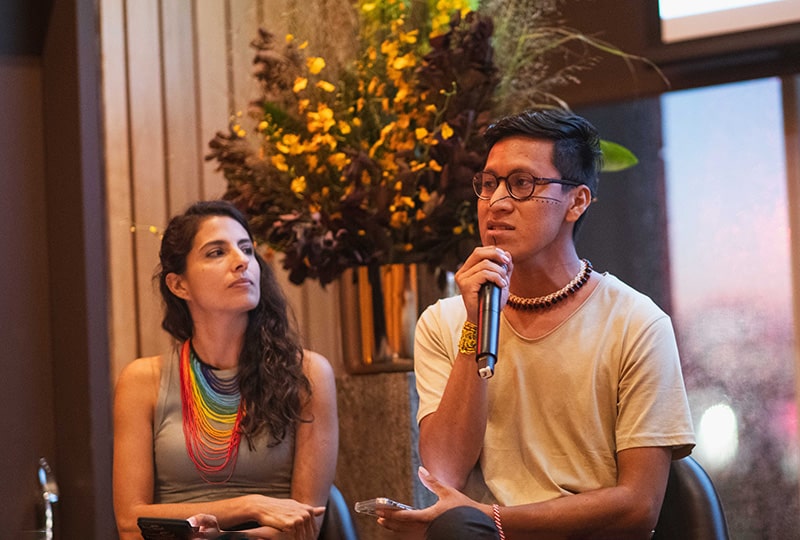
Alexis Grefa, a Kichwa Indigenous activist, speaks at the launch of the Chrysalis Youth Fund © Leandro Justen / Atmos
Obstacles for funders
Synchronicity Earth, the Congo Basin Programme and Pooled Fund were recently highlighted in a case study by Forest Tenure Funders Group, produced by Indufor on behalf of the Ford Foundation. The study assessed the barriers for funders, and aimed to give guidance on how donors can get more money to Indigenous and local communities. Kai Carter, Director of David and Lucile Packard Foundation’s Global Climate Initiative, gives some insight into the two main challenges larger funders face in doing this.
First, large funders typically need to get out larger grants, while local organisations may not have the infrastructure or systems in place to be able to absorb these larger sums of money. This can make it difficult for big funders without the capacity to make multiple grants.
Meanwhile these large funders may have more rigid reporting requirements, with an exhaustive checklist of requirements for partners receiving the grant to fulfil.
In this way, Kai explains, our pooled fund provides a solution: Synchronicity Earth can play “the broker in between to make it more compatible for large donors”.
The way forward for funders
For Kai, the most useful aspect of the Congo Basin Programme is that funds are distributed under the guidance of Synchronicity Earth’s affiliates. With an awareness of the nuanced complexities in the region, a local and cultural understanding informs their work. Providing a vital bridge between our London-based programme staff and conservation partners on the ground, the affiliate approach helps to build trust-based relationships, increase the capacity of smaller organisations, and implement appropriate solutions faster. Kai emphasised the importance of the affiliate role:
“These affiliates have proximity and expertise in the issues that we care most about, they are connected to and respond to the needs of our partners, which without a local presence we aren’t able to do.”
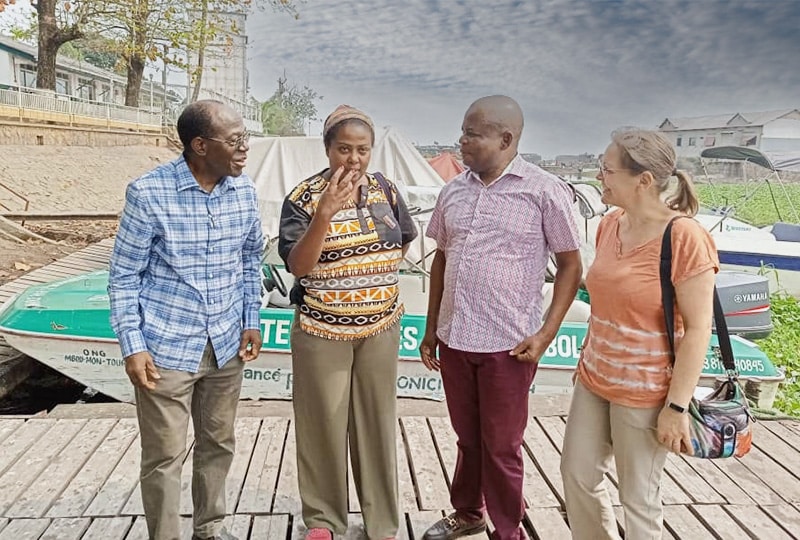
Sophie and Bihini meeting with staff from our Congo Basin Programme partner, Mbou Mon Tour. Image: Sophie Grange-Chamfray
Mutual and intentional learning
Part of our work to prioritise local knowledge means putting mutual learning at the heart of our programmes. As such, with our experienced Knowledge and Learning Lead Sophie Grange-Chamfray, we have focused on co-developing monitoring, reporting and learning with partners.
Kai stresses the significance of this, urging that we shouldn’t be designing monitoring and learning for donors, but rather for those who are doing the work. Crucially, we track the indicators local groups care about when measuring their progress and facilitating their learning.
Additionally, Synchronicity Earth has developed learning sessions for donors to hear directly from affiliates and partners, learning about the context of the regions our programmes focus on, including political developments, natural disasters or crises.
Presenting the opportunity to learn about grantee partners and their work also builds connection and facilitates networking. This understanding means funders like Kai can recommend partners directly to donors interested in the Congo Basin, increasing visibility.
“What I appreciate most about the approach is that Synchronicity Earth has been really intentional about learning for both donors, and partners.”
Beyond funding: a more holistic view
Through developing long-term relationships, we strive to better understand and respond to the needs of partners in a holistic way.
Moving away from simply granting and waiting for a report, Kai highlights what she calls ‘wraparound services’: “We want our partners to be effective. We want them to be healthy. And we know that means we need to offer things beyond funds, like institutional strengthening and leadership development. It means connecting our partners with technical assistance and with other potential partners and donors.”
There is no silver bullet for collaborative funding, but through our experience with pooled funding, it has become absolutely clear that finding ways to combine our efforts as funders – to share learning, knowledge and resources – is one of the single most important things we can do.


